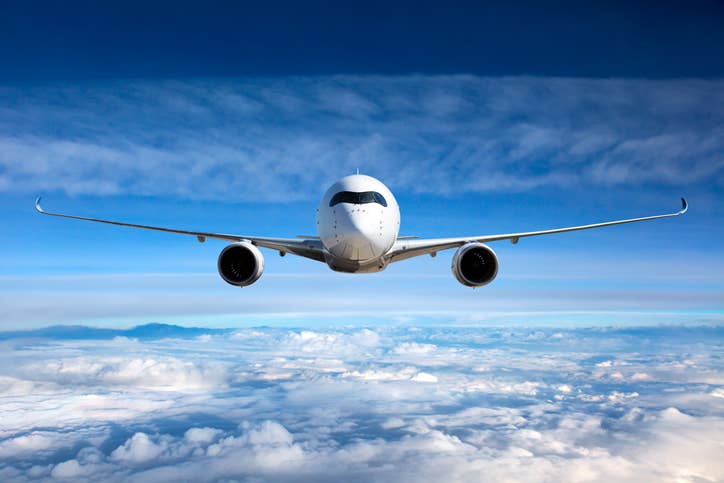How to Earn a High-Altitude Endorsement
The FAA does require the training for operating certain types of pressurized aircraft.

Through classroom instruction, ground training, and flight training from an authorized instructor, you can earn a high-altitude endorsement to operate a pressurized aircraft. [Credit: Alexey Petrov]
Although a high-altitude endorsement is not needed to operate as a pilot in command (PIC) of a nonpressurized aircraft that can reach high altitudes, the FAA does require it for operating certain pressurized aircraft.
The endorsement can help you prepare for flying these aircraft proficiently and help you secure the proper insurance. Part 61 defines a pressurized aircraft as one with a maximum operating altitude or service ceiling of 25,000 feet msl.
To earn your high-altitude endorsement, you’ll need both ground training and flight training from an authorized instructor. Here’s a step-by-step look at how to earn this endorsement:
What Is a High-Altitude Endorsement?
A high-altitude endorsement helps you prepare for flying a pressurized aircraft. You’ll learn valuable information, including how to handle a high-altitude aircraft, hypoxia symptoms and effects, supplemental oxygen use, and more.
Even if you plan to only operate nonpressurized aircraft at high altitudes, it’s a good idea to complete the high-altitude endorsement training to learn how to protect yourself.
Diminishing oxygen can impact your ability to control an aircraft and affect your vision, which could lead to a catastrophic accident. Other physiological concerns associated with hypoxia—including loss of consciousness—result from an improper understanding of high-altitude aircraft and their systems.
How Does a High-Altitude Endorsement Work?
Earning a high-altitude endorsement requires classroom instruction, ground training, and flight training from an authorized instructor.
During ground school, you’ll learn about signs and symptoms of altitude sickness, when to use supplemental oxygen, how long you can safely use that oxygen, and more.
Once you’ve completed your ground training successfully, you’ll take to the skies—or to a flight simulator—where you’ll learn how to operate an aircraft at 25,000 feet msl.
After successfully completing both the classroom and flight training portions of the training, your instructor will add the high-altitude endorsement to your logbook to demonstrate your preparation.
Four Steps for Earning a High-Altitude Endorsement
Now that you know more about this endorsement, here’s a look at the four-step process for earning your high-altitude endorsement:
Step 1: Ground Training
To provide this endorsement to a pilot, authorized instructors must include the following high-altitude endorsement instruction in their ground school training.
- Physiological aspects associated with high-altitude flight
- How the use of supplemental oxygen can impact you over time
- How to prevent high-altitude sickness
- How long you can maintain consciousness without supplemental oxygen
- High-altitude aerodynamics
- Incidents of decompression
- How to recognize the signs and symptoms of hypoxia or altitude sickness
- Respiration
Step 2: Flight Training
You can complete the flight training for this endorsement in a pressurized aircraft, a flight simulator, or a flight training device. If the instructor offers the training using a simulator or other training device, these tools must be capable of replicating the experience of operating a pressurized aircraft.
Your instructor will prepare you for how to handle emergency procedures during rapid decompression. But don’t worry, the instructor will not actually depressurize the aircraft during this training. Finally, your flight training will include instruction on the descent procedures during an emergency.
Step 3: Logbook Endorsement
Once you’ve completed the ground school and flight training to earn the high-altitude endorsement, your instructor will add the endorsement to your logbook. This will certify that you have completed the training satisfactorily.
Step 4: Exception to Earning a High-Altitude Endorsement
FAA Part 61 also lists several exceptions for individuals who do not need the high-altitude endorsement to fly a pressurized aircraft. These exceptions include the following:
- The pilot served as PIC of a high-altitude pressurized aircraft prior to April 15, 1991.
- The pilot completed a pilot proficiency check to earn a pilot certificate or rating prior to April 15, 1991.
- The U.S. military completed a PIC check for the pilot.
- The pilot completed a PIC proficiency check with an approved pilot check airman or the administration under part 121, 125, or 135.
Preparing for Operating a Pressurized Aircraft
The high-altitude endorsement is an important safety measure to prepare you for high-altitude flights in a pressurized aircraft. But it’s also wise to seek the endorsement if you plan to operate a non-pressurized aircraft at higher altitudes.
That way, you’ll be able to recognize the signs and symptoms of hypoxia before it’s too late. Many flight schools offer this valuable endorsement along with other courses that can help you round out your pilot skills.
Looking to stay in-the-know about updates in the industry? Be sure to subscribe to FLYING Magazine for more tips and insights.
FAQ
What altitude do you need a high altitude endorsement for?
A high altitude endorsement is required to act as PIC in a pressurized aircraft that has a maximum operating altitude or service ceiling above 25,000 feet msl.
What are the requirements for high altitude training?
Training for a high altitude endorsement must include flight and ground instruction logged with a flight instructor. Flight instruction must be done in a pressurized aircraft or full flight simulator. Ground instruction should cover all of the topics outlined in 14 CFR 61.31(g) including aerodynamics, hypoxia, and supplemental oxygen.
How do you get a high-performance endorsement?
A high performance endorsement is required to act as PIC of aircraft with an engine of more than 200 hp. To get a high performance endorsement, you must log relevant ground and flight training with a flight instructor.pdates in the industry? Be sure to subscribe to FLYING Magazine for more tips and insights.

Sign-up for newsletters & special offers!
Get the latest FLYING stories & special offers delivered directly to your inbox






